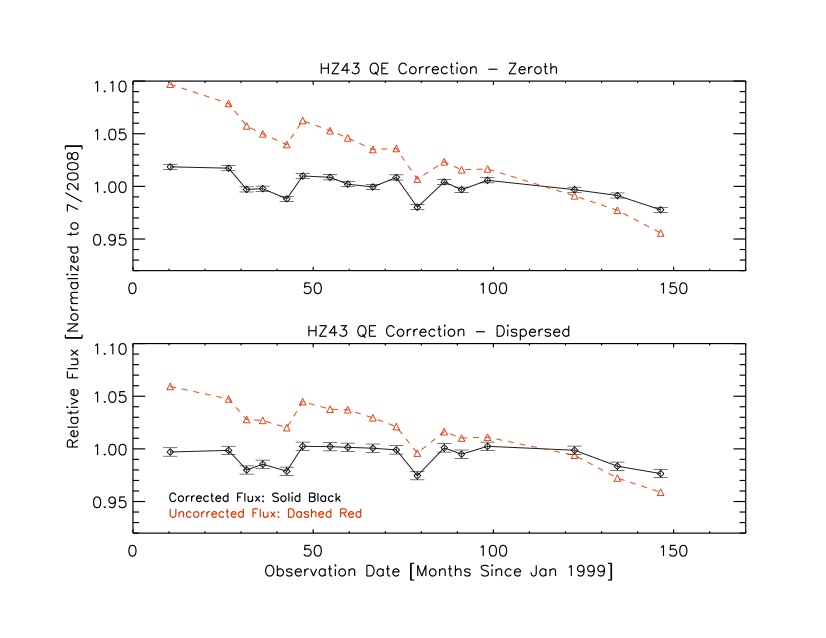


|

|
- Nick Durham
July 2011
The HRC-S QE has been refined with the inclusion of new time-dependent QE calibration based on seventeen HRC-S/LETG monitoring observations of HZ43 and four supplemental observations of Sirius B. Both of these white dwarfs should be completely stable in X-ray output, and so provide standard candles for LETGS monitoring.
Over the length of the Chandra mission our analysis of these sources shows a linear QE decline of roughly 0.5%/year. The 0th-order (aimpoint) region of the detector shows a slightly steeper decline.
In order to fully account for the two distinct rates of decline, the HRC-S QEU file, which contains QE variations based on chip location, is modified into an annual time-dependent list of files. For an observation obtained in a given year, CIAO will then employ the QEU map appropriate for that year. Files are indexed to mid-year, so that the error in QE incurred by the yearly digitization amounts to no more than 0.25% or so.
The results of the analysis are summarized in Figure 1 below that shows the HZ43 observations scaled by the effective areas in the current CIAO release, and using the new time-dependent QEU files. The secular trend in the scaled count rates is removed for both 0th order and dispersed events.
Figure 1: Trend in HRC-S/LETG flux from HZ 43 before (dashed
red) and after (solid black) correction for QE decline, for the zeroth
order (top) and dispersed events (bottom).

The time-dependent QEUs were released in CALDB 4.4.5. See the
HRC
Calibration page for filenames and applicable dates.
Last modified: 09/27/12
 |
The Chandra X-Ray
Center (CXC) is operated for NASA by the Smithsonian Astrophysical Observatory. 60 Garden Street, Cambridge, MA 02138 USA. Email: cxcweb@head.cfa.harvard.edu Smithsonian Institution, Copyright © 1998-2004. All rights reserved. |